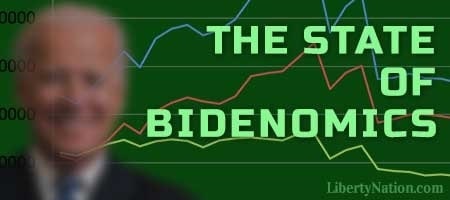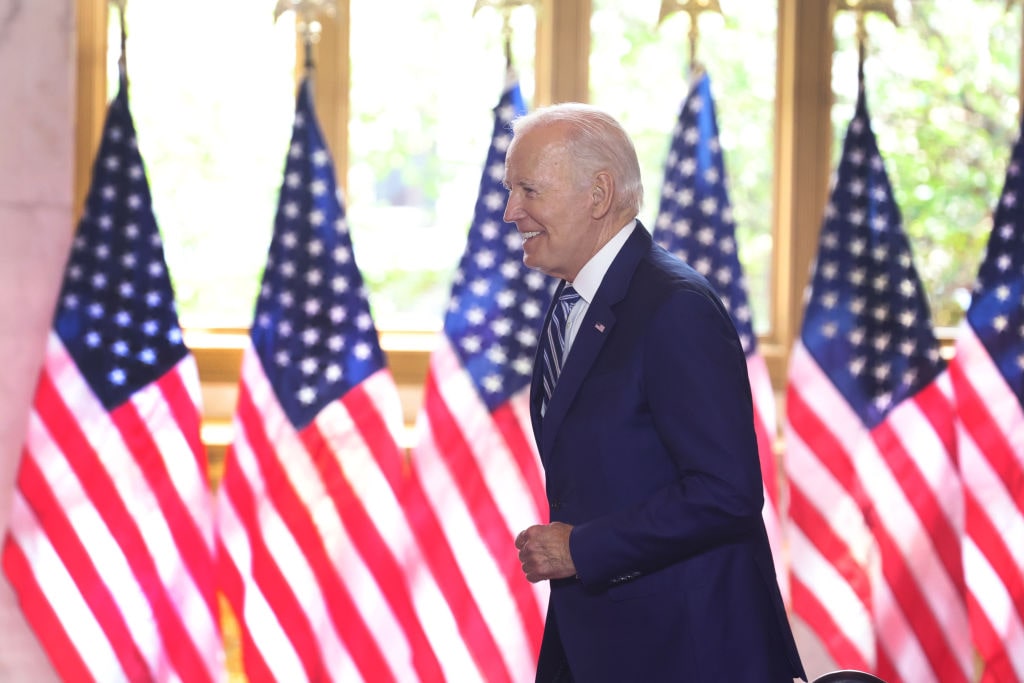In 1946, eminent economics author Henry Hazlitt published Economics in One Lesson. It provided the layman with the art of economics, basing much of the 200-plus-page book on the classic Frederic Bastiat essay “What is Seen and What is Not Seen.” Hazlitt conveyed the problems of price controls, the advantages of free trade, the dangers of monetary inflation, and a wide range of other pressing subjects that plague modern society. Seventy-seven years later, President Joe Biden offered an audience in Chicago, Illinois, on June 28 the opportunity to attend a speech whereby he espoused Bidenomics in one lesson. But was the president’s crash course as effective as Hazlitt’s?
Bidenomics Explained
What exactly is Bidenomics? According to vague allusions from the president, Bidenomics is “about the future,” “restoring the American dream,” “to give families more breathing room,” and “bring us together as a nation.” Biden ostensibly learned a lot from his recent lunch meeting with former President Barack Obama, the same man who uttered ad nauseam hope and change for eight years. It is rather fitting, is it not? Bidenomics and Obamanomics are similar to some degree, as they have brought the US economy anemia and stagnation. So, of course, when the results have been abysmal, it is always best to be as evasive as possible, which is Politics 101 rather than Econ 101.
Is Bidenflation Like Bidenomics?
Biden and administration officials are fond of saying, “growing the economy from the middle out and the bottom up, not the top down.” It is a brilliant slogan from a political perspective. Unfortunately, the reality portrays a different story: Inflation has outpaced real wage growth for 26 consecutive months, the average US family has been $7,400 poorer under Biden, and half the country is living paycheck to paycheck, with many households depending on credit to survive. Who could forget soaring food costs, baby formula shortages, and sky-high mortgage rates in a housing market with scarce supply?
Small Business Boom – Sort Of
An under-the-radar achievement that the White House enjoys touting is the record number of new small business applications. “We’ve seen a record 10.5 million applications — 10.5 million applications — for folks looking to start a small business just in the last two years — 10.5. Every one of those applications is an application to hope. Hope,” Biden said in his prepared remarks.
 This is indeed a terrific development since small business drives a significant portion of the US economy. The May non-farm payroll report revealed 9.4 million self-employed workers. Unfortunately, Biden’s fiscal year 2024 budget proposal consists of $4.7 trillion in tax hikes over the next decade, including $650 billion that will be slapped on small businesses by increasing the Small Business Surtax. Moreover, according to the House Ways and Means Committee, “Nearly one million small businesses organized as ‘C’ corporations will face a tax rate that is 33 percent higher.” Let’s not forget the $15 minimum wage that makes it harder for smaller outfits to survive compared to their larger counterparts (basic economics).
This is indeed a terrific development since small business drives a significant portion of the US economy. The May non-farm payroll report revealed 9.4 million self-employed workers. Unfortunately, Biden’s fiscal year 2024 budget proposal consists of $4.7 trillion in tax hikes over the next decade, including $650 billion that will be slapped on small businesses by increasing the Small Business Surtax. Moreover, according to the House Ways and Means Committee, “Nearly one million small businesses organized as ‘C’ corporations will face a tax rate that is 33 percent higher.” Let’s not forget the $15 minimum wage that makes it harder for smaller outfits to survive compared to their larger counterparts (basic economics).
At the same time, “under Bidenomics, we’ve already had over $490 billion in private investment commitments.” This emanates from all the subsidies, taxpayer-funded loans, and credits extended to large companies as part of the Inflation Reduction Act and the CHIPS and Science Act. It is not genius public policymaking that if governments hand out free money to companies, they will take the cash.
There You Go Again
In his speech, President Biden reiterated two falsehoods that even the mainstream media – and Twitter’s Community Notes – have taken the White House to task: the federal deficit and jobs.
Here is what Biden said about the budget shortfall: “Just in my first two years in office, my team and I have reduced the deficit by $1.7 trillion — more than any president has just in two years. And the budget agreement I negotiate, without having to give away anything of consequence, reduced the deficit by another trillion dollars.” But, as Liberty Nation has noted, the deficit fell by this much due to the expiration of pandemic-related spending. So, two things are worth pointing out. First, the fiscal year 2023 annual deficit is already north of $1 trillion with three months to go. Second, the 12-month rolling deficit is about $2 trillion. If Bidenomics were about fiscal responsibility, then this is the biggest lie since the Red Guard Cartel told everyone that the coronavirus vaccine stops transmission.

(Photo by Scott Olson/Getty Images)
Here is what the 46th president purported about jobs: “We created 13.4 million new jobs. More jobs in two years than any president has ever made in four, in two.” Before the COVID-19 public health crisis, there were 158.749 million employed Americans. Today, 160.721 million people are working. So, where does the 13.4 million figure come from? If you buy into the notion that presidents create jobs, then Biden is only responsible for fewer than two million. The current administration includes the positions that were returned to the economy as new job creation, a misleading strategy utilized by both sides of the aisle for political gain.
Not a Joke
Reaganomics. Bushonomics. Clintonomics. Bushonomics again. Obamanomics. Trumponomics. Every president has had his economic doctrine to advance some concoction of higher or lower taxes, more or fewer regulations, and more spending and deficits. This is not a joke: Bidenomics takes the worst concepts from his predecessors – and then some – and blends them into one giant mess, resulting in rampant inflation, a climbing national debt, and perhaps worst of all, an expanding Leviathan. The American people might relish the idea of saving money by avoiding so-called junk fees on concert tickets. But the superior option would be an environment of not having to pay 9% more in supermarket prices or $3.50 a gallon in gasoline. The Bidenomics in one lesson has been debunked countless times by some of the top minds in the country, and this game will be played constantly heading into 2024.



